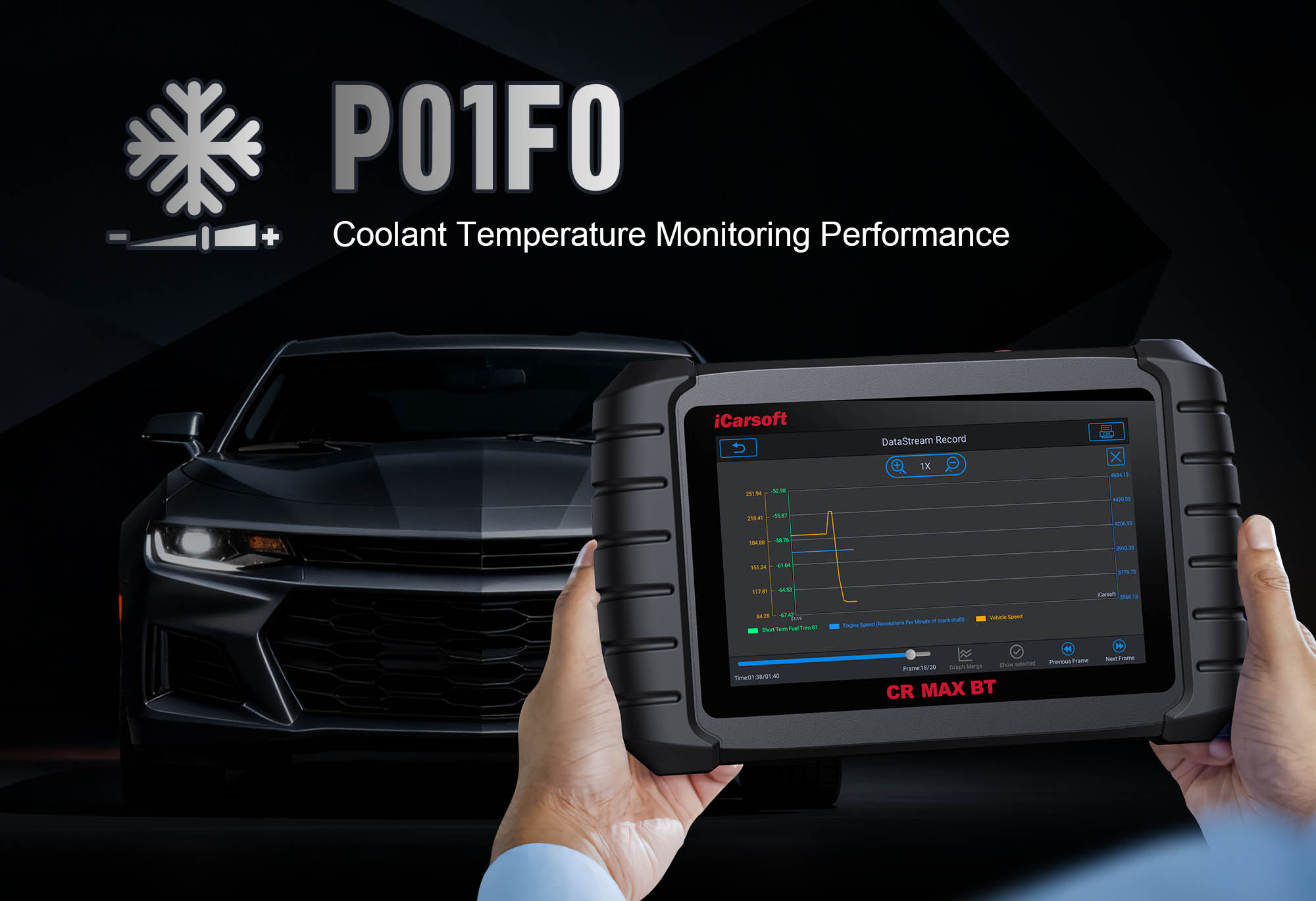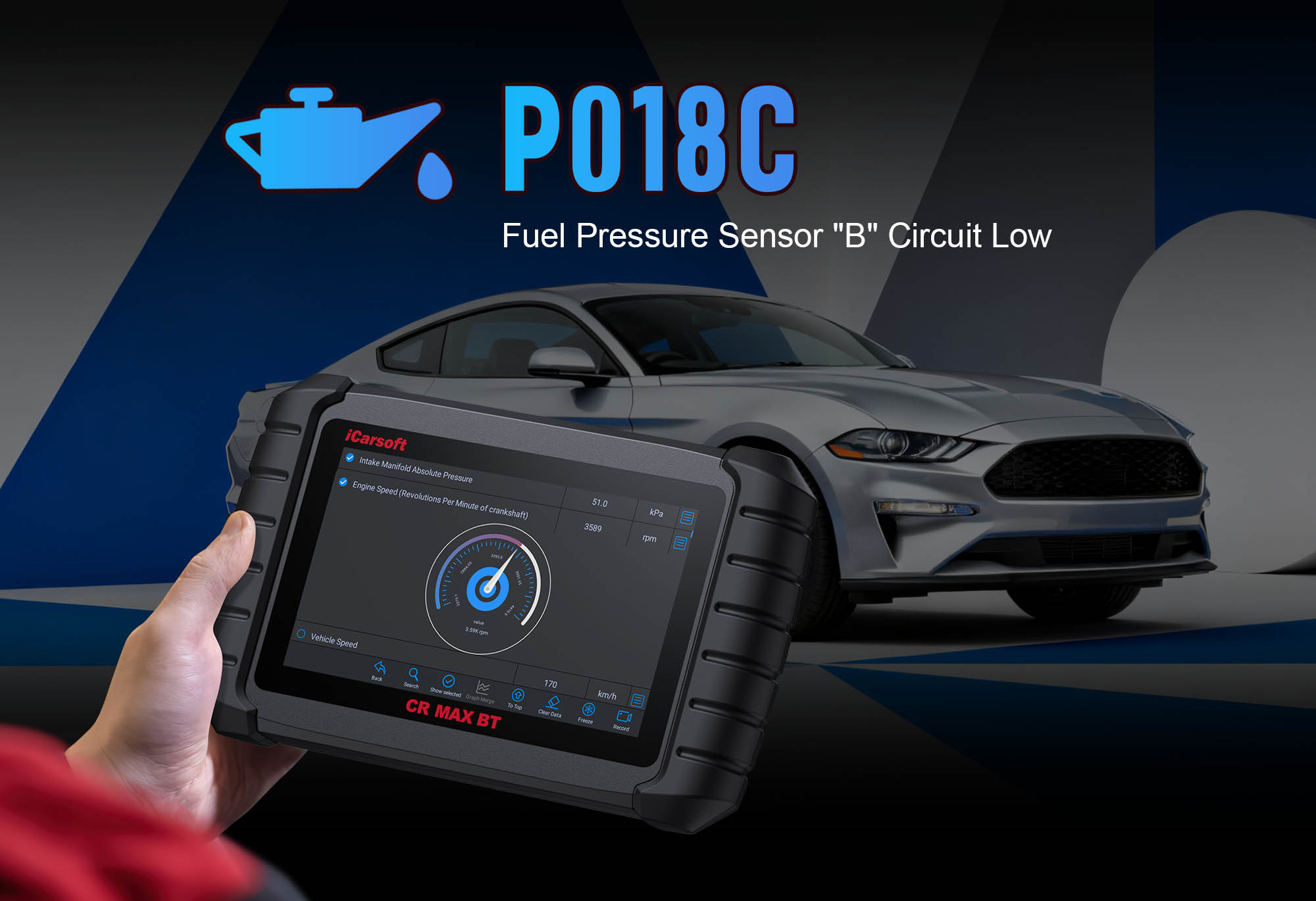Understand & Fix P2563: Turbocharger Boost Control Position Sensor Performance with iCarsoft CR Pro S
If your turbocharged vehicle struggles with inconsistent acceleration, emits a turbo-related whine, or triggers a Check Engine Light, a diagnostic scan will likely return P2563. This OBD-II code stands for "Turbocharger Boost Control Position Sensor Performance"—a fault targeting the sensor that monitors the turbocharger’s boost control actuator position. The actuator adjusts the turbo’s wastegate to regulate boost pressure; when the sensor’s signal is erratic or outside the normal range, the Engine Control Module (ECM) logs P2563 to prevent engine damage from overboost or underboost.
Generic scanners might only label this a "turbo sensor error" but can’t distinguish between a faulty sensor, stuck actuator, or wiring glitch. This ambiguity often leads to misspent money on unnecessary turbo parts. The iCarsoft CR Pro S eliminates guesswork with OE-level turbo diagnostics, live sensor data tracking, and brand-specific insights—making it the ideal tool for fixing P2563 in popular turbocharged vehicles like the Ford EcoBoost, Chevrolet Duramax, and Volkswagen TDI. Below, we break down P2563’s causes, symptoms, step-by-step fixes, and 8 FAQs.
What Exactly Is P2563?
P2563 specifically targets the turbocharger boost control position sensor. This sensor is mounted on the turbo’s boost control actuator (a motorized or vacuum-operated component) and sends real-time data to the ECM about the actuator’s position. The ECM uses this data to adjust the wastegate—opening it to reduce boost (preventing overboost) or closing it to increase boost (improving performance). A "performance" error means the sensor’s signal is inconsistent (e.g., sudden voltage spikes) or doesn’t match the ECM’s expected values, disrupting boost control.
This code is prevalent in vehicles with high-performance turbos or aging boost systems, such as the Ford F-150 EcoBoost P2563 and Chevrolet Silverado Duramax P2563. It’s also common in European models like the Volkswagen Golf GTI, where precise turbo control is critical for emissions and power.
Key Symptoms of P2563
-
Illuminated Check Engine Light: The primary warning, often paired with a "Turbo Boost Control Fault" message in newer models.
-
Inconsistent Acceleration: The vehicle may surge forward (overboost) or lag (underboost) when pressing the gas pedal—common in VW TDI P2563 acceleration issues.
-
Turbo Whining/Grinding Noises: A high-pitched whine (stuck actuator) or grinding (damaged sensor) from the turbocharger area.
-
Reduced Power Mode: The ECM limits power to 50% to protect the engine—critical for Ram 2500 P2563 towing scenarios.
-
Increased Fuel Consumption: Overboost or underboost disrupts the air-fuel mixture, leading to 10–15% higher MPG (prevalent in high-mileage P2563 turbo).
Common Causes of P2563
|
Cause
|
Description
|
|
Faulty Boost Control Position Sensor
|
Internal sensor damage (e.g., worn contacts) causes erratic signals—top cause in Ford EcoBoost P2563 sensor failure.
|
|
Stuck/Damaged Boost Control Actuator
|
Carbon buildup or oil contamination prevents actuator movement, leading to sensor misalignment—common in Chevy Duramax P2563 actuator models.
|
|
Wiring/Connector Issues
|
Frayed wires, corroded terminals, or loose connectors disrupt the sensor’s signal—prevalent in VW Golf P2563 wiring fault (exposed to undercarriage debris).
|
|
ECM Software Glitch
|
Outdated ECM firmware misinterprets sensor data, triggering false P2563 codes—common in 2020+ turbo vehicles P2563 software.
|
|
Turbocharger Oil Contamination
|
Low oil levels or dirty oil damage the actuator’s moving parts, leading to sensor position errors.
|
Why iCarsoft CR Pro S Excels at Diagnosing P2563
Resolving P2563 requires precise turbo system testing—something basic scanners can’t do. The CR Pro S stands out with turbo-specific features:
Brand-Specific Code Decoding
Translates P2563 into model-specific insights (e.g., "Ford EcoBoost: Boost Sensor Signal Too High; Check Actuator Alignment" vs. "VW TDI: Sensor Wiring Short to Ground").
Live Boost Sensor Data
Monitors real-time sensor voltage (0.5V–4.5V normal) and actuator position, highlighting deviations triggering P2563.
Bi-Directional Actuator Testing
Sends commands to the boost control actuator to verify movement—critical for distinguishing stuck actuator vs. sensor faults.
Turbo System Calibration
Recalibrates turbo to ECM after part replacement—skipping this causes P2563 to return (supports 50+ vehicle makes).
Global Turbo Coverage
Works with 50+ turbocharged brands: Ford, Chevrolet, Volkswagen, Ram, BMW, and more.
Component Location Tool
Pinpoints boost control sensor/actuator position (near turbocharger)—saves time on inspection and access.
Step-by-Step: Diagnose & Fix P2563 with iCarsoft CR Pro S
-
Confirm P2563 & Gather Vehicle-Specific Data
Plug the CR Pro S into the OBD-II port, power on, and select AutoVIN Identify to detect turbo make/model/system type.
Navigate to Engine > Fault Codes > Read Codes to confirm P2563. Tap Code Details for insights (e.g., "Chevrolet Duramax: Voltage 5.0V (Over Max); Check Sensor/Wiring").
-
Analyze Live Turbo Sensor Data
Go to Engine > Live Data > Turbo System to monitor three key metrics:
1. Boost Control Sensor Voltage: Fluctuates smoothly 0.5V (low boost)–4.5V (high boost)—spikes/flatlines = sensor issue.
2. Actuator Position: Matches ECM target (30% open at idle, 80% at full throttle)—mismatch = stuck actuator.
3. Boost Pressure (Actual vs. Target): Within 1–2 psi—large gap = underboost/overboost from P2563.
-
Test the Sensor, Actuator, & Wiring
1. Locate boost control sensor via Component Location tool. Disconnect connector, use Resistance Test (OEM specs 10–30 ohms)—open circuit = faulty sensor.
2. Actuator Test: Use Bi-Directional Control > Turbo > Actuator Test—listen for clicking, check position data. No movement = clean/replace actuator.
3. Wiring Test: Use Continuity Test for breaks between sensor and ECM—repair/replace damaged wires.
-
Repair & Validate the Fix
1. Replace faulty sensors/actuators, repair wiring, or update ECM software (via CR Pro S’s Software Update).
2. Run Turbo Calibration to sync system to ECM.
3. Clear P2563 via Fault Codes > Clear Codes, test drive 50 miles. Stable sensor voltage/boost pressure = fix successful.
FAQs: P2563 Troubleshooting (Low-Competition Long-Tail Keywords)
Can I drive with P2563, or will it damage my turbo?
Short trips are safe, but prolonged driving risks turbo damage (seized bearings from overboost). Avoid heavy hauling with Ford F-150 P2563—diagnose with the CR Pro S immediately.
How much does it cost to fix P2563?
New boost sensor = $80–$200 (parts + labor), actuator = $300–$600, new turbo = $1,500+. The CR Pro S saves $100–$250 on diagnostics and avoids unnecessary turbo replacement.
Why does P2563 return after sensor replacement?
The actuator is stuck or wiring is damaged. Use the CR Pro S’s bi-directional test to check the actuator and fix hidden issues to prevent recurrence.
Is P2563 the same as P0299 (Low Boost Pressure)?
No—P2563 = sensor performance issue; P0299 = actual low boost. The CR Pro S clarifies differences with boost pressure tests to confirm the fault.
Can turbo cleaner fix P2563?
Yes—if the actuator is stuck with carbon buildup. For VW TDI P2563 actuator clean, use turbo cleaner and follow with CR Pro S’s calibration to restore performance.
How often should I service my turbo to prevent P2563?
Change oil every 5k–7.5k miles (turbo-friendly oil), inspect boost wiring annually, and run monthly turbo checks with the CR Pro S—key for P2563 prevention.
Will P2563 affect my turbo warranty?
Yes—unrepaired faults may void coverage. Fix P2563 promptly with the CR Pro S to maintain turbo warranty validity, especially for new vehicles.
Can the CR Pro S fix P2563 in hybrid turbo vehicles?
Yes—supports hybrid turbos (e.g., Toyota Prius Prime) with hybrid-specific turbo tests, ensuring accurate diagnosis of P2563.
Conclusion
P2563’s turbo performance issues can be intimidating, but the iCarsoft CR Pro S simplifies diagnosis with live data, bi-directional tests, and brand-specific insights. It ensures you fix the root cause—whether a sensor, actuator, or wiring—saving time and money.
With its turbo-focused features, lifetime free updates, and global coverage, the CR Pro S is a must-have for turbo vehicle owners. Resolve P2563, restore turbo power, and keep your vehicle running smoothly—all with one professional tool.





